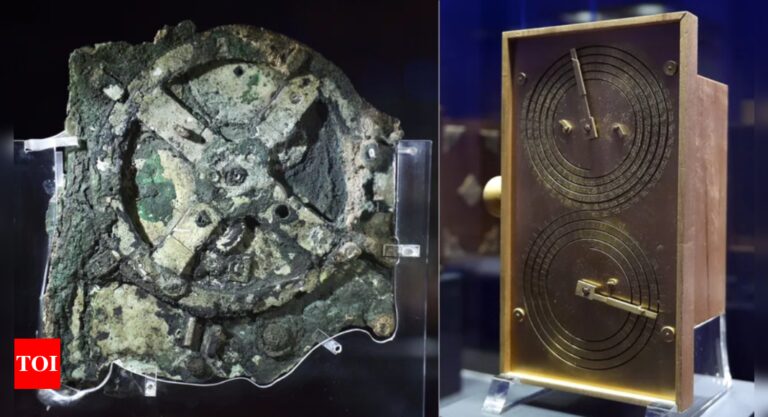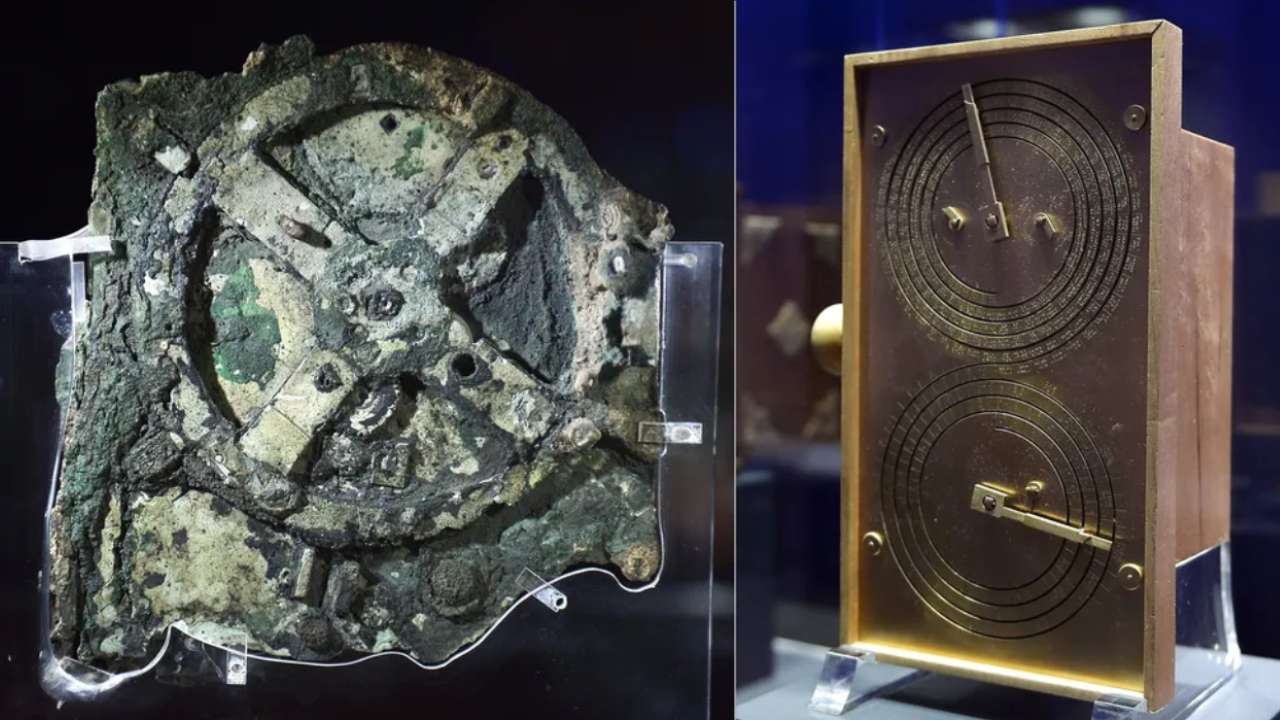
[ad_1]
Recent findings about gravitational waves, which are disturbances in the fabric of spacetime, have shed new light on the ancient Antikythera mechanism, a cosmic calculator believed to be nearly 2,000 years old. The research suggests that the device followed a lunar calendar rather than a solar one.
The Antikythera mechanism, an ancient artifact that dates back to the second century BC, making it the world’s “oldest computer”, was discovered in pieces in a shipwreck in the Aegean Sea in 1901.It utilized gears and dials to track ancient astronomical events, such as solar eclipses and planetary movements.
The device’s precision and craftsmanship have impressed researchers, with study co-author Joseph Bayley stating, “It’s given me a new appreciation for the Antikythera mechanism and the work and care that Greek craftspeople put into making it — the precision of the holes’ positioning would have required highly accurate measurement techniques, and an incredibly steady hand to punch them.”
The new study builds upon previous research from 2021 that used X-ray imaging to reveal “fresh details of regularly spaced holes” beneath one of the mechanism’s broken rings, known as the “calendar ring.”
The 2021 study, published in Nature, also noted the interdisciplinary nature of the Antikythera mechanism, combining “cycles from Babylonian astronomy, mathematics from Plato’s Academy and ancient Greek astronomical theories.”
Using statistical models derived from gravitational wave research, the team predicted that the calendar ring likely contained 354 holes, corresponding to a lunar year of 354 days (or 12 lunar cycles). The Ancient Egyptian calendar and the Islamic calendar still widely used today both follow the lunar year, unlike the 365-day solar year most of the world uses.
The team drew inspiration from YouTuber and machinist Chris Budiselic’s channel, Clickspring, where he has been building a replica of the Antikythera mechanism and conducting independent research. Budiselic’s team suggested the ring could contain between 347 and 367 holes.
The study employed two forms of analysis: Bayesian statistics, led by Glasgow astrophysics professor Graham Woan, and statistics adapted from gravitational wave research, led by Joseph Bayley. Both analyses independently suggested the ring has either 354 or 355 holes, greatly increasing the likelihood that the lunar calendar was more important to the makers of the Antikythera mechanism.
The Antikythera mechanism, an ancient artifact that dates back to the second century BC, making it the world’s “oldest computer”, was discovered in pieces in a shipwreck in the Aegean Sea in 1901.It utilized gears and dials to track ancient astronomical events, such as solar eclipses and planetary movements.
The device’s precision and craftsmanship have impressed researchers, with study co-author Joseph Bayley stating, “It’s given me a new appreciation for the Antikythera mechanism and the work and care that Greek craftspeople put into making it — the precision of the holes’ positioning would have required highly accurate measurement techniques, and an incredibly steady hand to punch them.”
The new study builds upon previous research from 2021 that used X-ray imaging to reveal “fresh details of regularly spaced holes” beneath one of the mechanism’s broken rings, known as the “calendar ring.”
The 2021 study, published in Nature, also noted the interdisciplinary nature of the Antikythera mechanism, combining “cycles from Babylonian astronomy, mathematics from Plato’s Academy and ancient Greek astronomical theories.”
Using statistical models derived from gravitational wave research, the team predicted that the calendar ring likely contained 354 holes, corresponding to a lunar year of 354 days (or 12 lunar cycles). The Ancient Egyptian calendar and the Islamic calendar still widely used today both follow the lunar year, unlike the 365-day solar year most of the world uses.
The team drew inspiration from YouTuber and machinist Chris Budiselic’s channel, Clickspring, where he has been building a replica of the Antikythera mechanism and conducting independent research. Budiselic’s team suggested the ring could contain between 347 and 367 holes.
The study employed two forms of analysis: Bayesian statistics, led by Glasgow astrophysics professor Graham Woan, and statistics adapted from gravitational wave research, led by Joseph Bayley. Both analyses independently suggested the ring has either 354 or 355 holes, greatly increasing the likelihood that the lunar calendar was more important to the makers of the Antikythera mechanism.
[ad_2]
